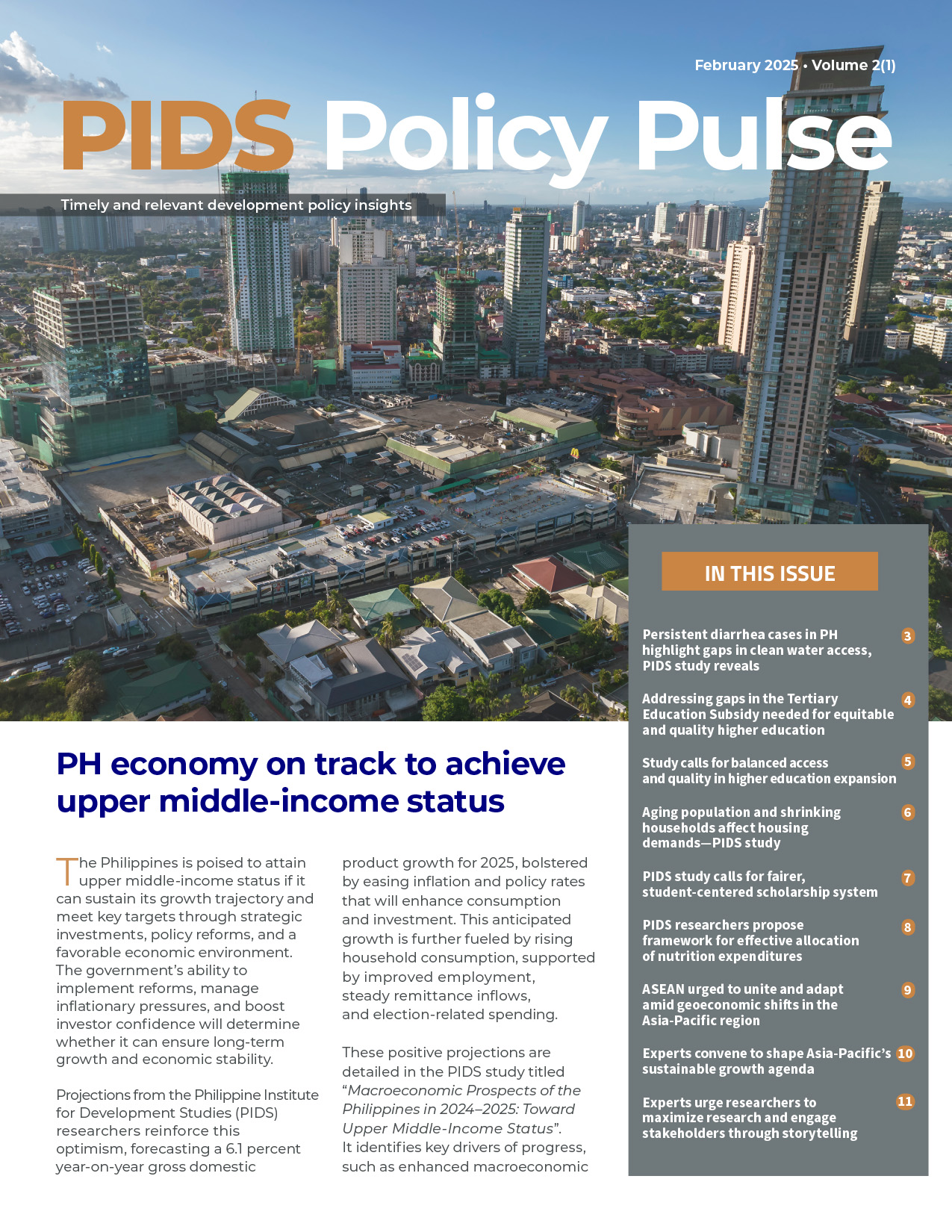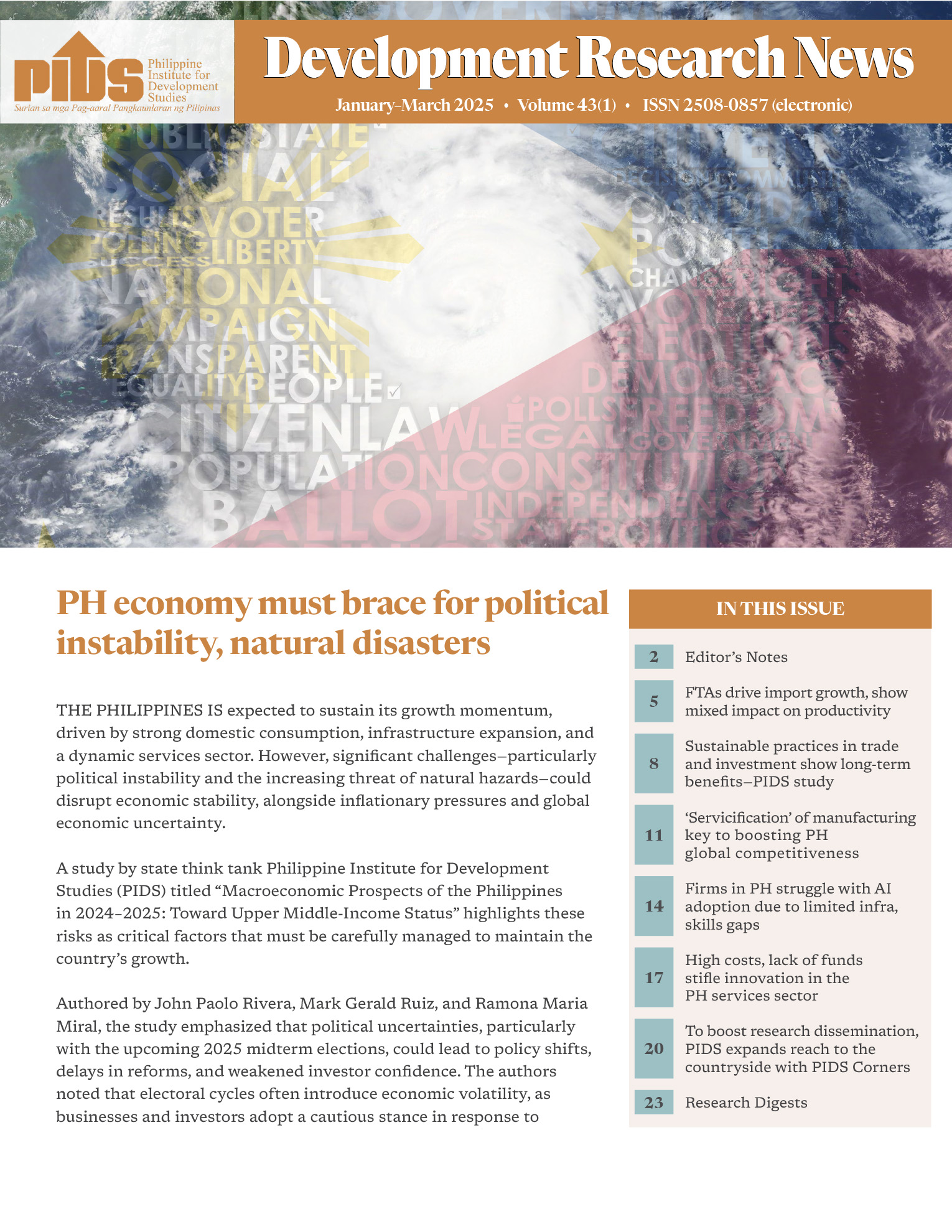TO encourage more companies to hire persons with disabilities (PWDs), more incentives aside from tax breaks and a simpler process for claiming them might help.
That’s one of the recommendations Christian D. Mina raised in “Employment Profile of Women with Disabilities in San Remigio and Mandaue City, Cebu, Philippines”, published in December 2017 by the Philippine Institute of Development Studies (PIDS).
Mina also recommended an award for private employers who have consistently hired PWDs and complied with the Accessibility Law, similar to the Department of Interior and Local Government’s Seal of Good Local Governance.
“If this is feasible, a certain percentage of products and services needed by government offices can be purchased from these awarded establishments,” Mina wrote.
Another recommendation was for human resources professionals to make sure they respect the rights of PWDs and heed policies meant to improve their access to good jobs. Mina observed that unskilled labor was the most common occupation among the respondents in both Mandaue and San Remigio.
More access
Physical access to buildings, through ramps, for instance, and “accessible websites” also need to be made available so PWDs can move around safely and use forms and other information posted online by government agencies.
Mina’s study reached a total of 1,031 women with disabilities, of whom 756 were in Mandaue and 275 in San Remigio. Lack of mobility was the biggest challenge. About half of the respondents in Mandaue had impaired mobility and 36 percent of those in San Remigio had similar conditions.
In terms of education, about one in four of the respondents in San Remigio (27.2 percent) had a high school diploma. Less than 20 percent had a high school diploma among the respondents in Mandaue. More than 90 percent (92.1 percent) of the respondents in San Remigio belonged to poor households. The same was true for 62.6 percent of the respondents from Mandaue City.
“Only around a third (35.8 percent) of respondents in Mandaue were part of the labor force while a little more than half (53.1 percent) of those in San Remigio were economically active,” Mina wrote. Most respondents said it was their permanent disability or housekeeping duties that kept them from entering the labor force.
Among the respondents who worked, sales was the most common occupation. About 73 percent of the group’s economic activities in Mandaue City comprised “street vending, running a store and ice selling.” In San Remigio, 45 percent of the respondents’ economic activities consisted of vending in a wet market or on the streets, running a store, selling ice and buying or selling scrap materials. Agriculture jobs, like fishing or raising crops or livestock, “accounted for 33 percent of all occupations” in San Remigio.
Lack of company
What kept the respondents in low-quality jobs? The study pointed to a combination of a low level of education, lack of training in occupational skills, lack of employment opportunities, lack of access to assistive devices or services, lack of PWD-friendly facilities, and lack of awareness about policies and programs designed to assist PWDs.
“Majority of respondents, especially in Mandaue City, believed that their disability had been preventing them from getting a decent employment,” Mina reported. “Others had not been allowed by their families to go out unaccompanied. More often than not, no one among their household members was available to accompany them when going out because other members of their family were busy with their own work.” (IDA)












